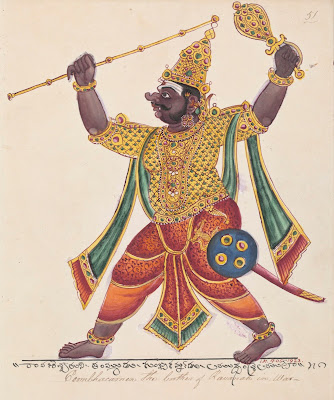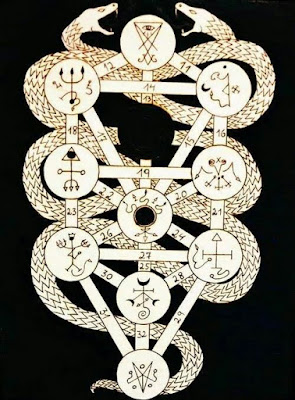In occult and alchemical studies, especially ones that followed after Paracelsus, there were four elemental creatures that were comprised of the four classic elements. They were the Sylph (Air), Gnome (Earth), Salamander (Fire), and the Undine (Water).
The Sylph will appear in my Basic Bestiary in a slightly altered form from what originally appeared in the Monster Manual. Elemental Gnomes I have addressed in the past. Salamanders already have been covered well by others, so they don't need my input. That just leaves the Undine.
There is undine, the water elemental and there is Undine, the proper name for a character the is more like a mermaid or merrow. There is also a class of water spirits, related to nereids and naiads. They also have a beautiful song similar to the sirens, but undines do not lure people to their deaths. In fact much of the positive traits of the ancient mermaids have seemed to transfer to undines early on. Today the myths of mermaids, minus the drowning of sailors, are nearly the same as those of the undine.
All these creatures, mythological speaking, had a lot in common. To make a monster though I need to tease out the essentials.
Undine
Medium Elemental (Water)
Number Appearing: 1d4 (1d8)
Alignment: Neutral [Neutral (Good)]
Movement: 90' (30') [9"]
Swim: 240' (80') [24"]
Armor Class: 7 [12]
Hit Dice: 3d8*** (14 hp)
THAC0: 17 (+2)
Attacks: 1 Water whip
Damage: 1d4
Special: Song, invisible in water, magic, water shape
Save: Monster 3
Morale: 6 (8)
Treasure Hoard Class: II x10 (Q x 10)
XP: 80 (OSE) 95 (LL)
Str: 9 (0) Dex: 16 (+2) Con: 10 (0) Int: 10 (0) Wis: 10 (2) Cha: 20 (+4)
Undines appear to be a type of water nymph or other mercreature, but they are in fact elementals from the plane of water. They do have some water fey in their ancestry, but these creatures are elemental spirits in corporeal form. In their natural state, they appear as watery figures indistinguishable from the waters they swim in. This grants them complete invisibility. When they take on a human form they always appear as attractive human or elf-like women. In this form, they may move about on dry land but must return to their stream, pool, sea, or other body of water once per week.
The undine is curious about land-dwelling folk but less so than their distant cousins the merrow or mermaids. When confronted they will most often flee to their watery homes. But if attacked they can shape water into a water whip-like tendril and strike target up to 20 feet away. They may also cast any water-based spell as a 5th level caster of the appropriate type. They most often have druid, magic-user, and witch spells.
The undine does have a song that acts as a charm person spell. The effects are not intentional, the undine does not choose to charm when she sings, but she can use her singing and her charm to her advantage if she chooses. An undine not wanting undue attention from amorous land dwellers will make sure that no one is around when she sings.
Undines have to return to their body of water once per week or lose points of Constitution at the rate of 1 per week. At 0 points she will die. An undine cannot enter holy or hallowed ground. She is not barred from doing so, it just makes them uncomfortable and it is treated as a failed morale check. Clerics and priests believe they can turn undines as if they were undead. The undine will leave the area is a cleric present their holy symbol, but there is no compulsion behind this. Undines just do not like clerics.
Like many elemental creatures the undine does not have a soul, but a spirit instead. For this reason resurrection and raise dead spells will not work on them. If an undine falls in love with a mortal and can get that mortal to profess their undying and true love to the undine then the undine may remain on land as a human woman and will "grow" a soul. Though it is said that if their lover dies before them or if their lover discovers the truth about them they will return to the sea.
--
I like this. She ended up being a little more powerful than her sister the sylph is but that is fine really.
I still really need to fix my treasure types. I might adopt the OSRIC model and just list out what everything is and avoid Treasure Types or Horde Classes altogether. Much more work on my part, but it gives far more control over what I can give each one.
Here is what OSRIC lists for the Sylph:
Treasure: 10d4 gems (50%), 1 misc. magic and 1 potion (60%)
I mean that is only one line. I could easily convert what I have now to that. OSRIC also divides the monsters by type. So naturally, all the devils, demons, dragons and dinosaurs are all grouped together, as we see in the Monster Manual. But so are sylvan and Faerie creatures, as we would see in the BECMI Creature Catalog. I like both styles. I am more likely to go with alphabetical listings with some large groups. Like the group I am talking about on Monday!











